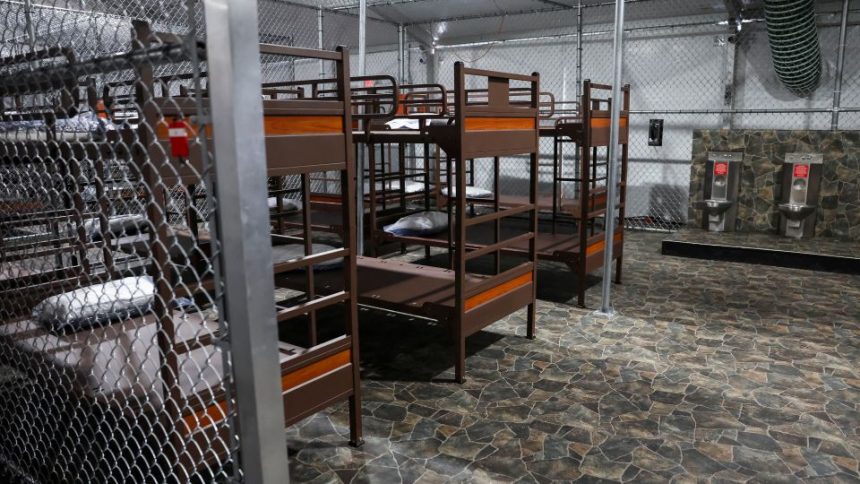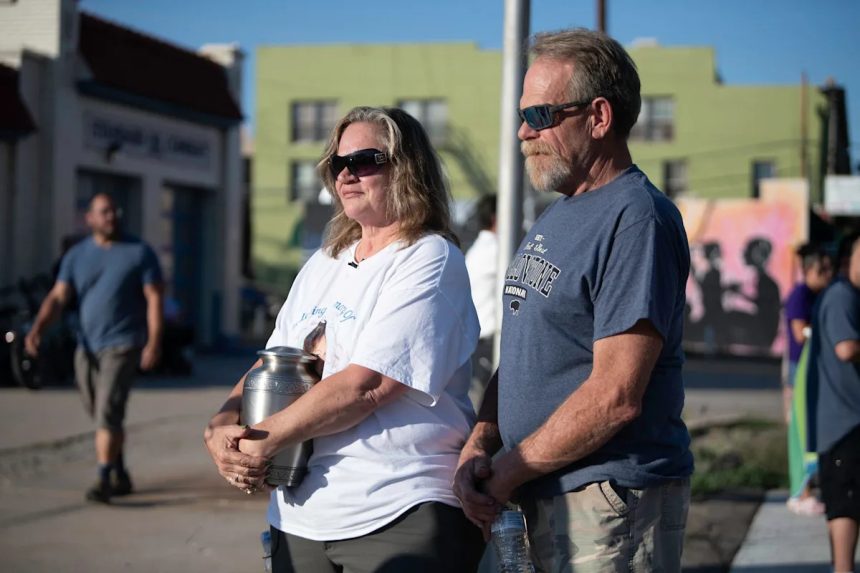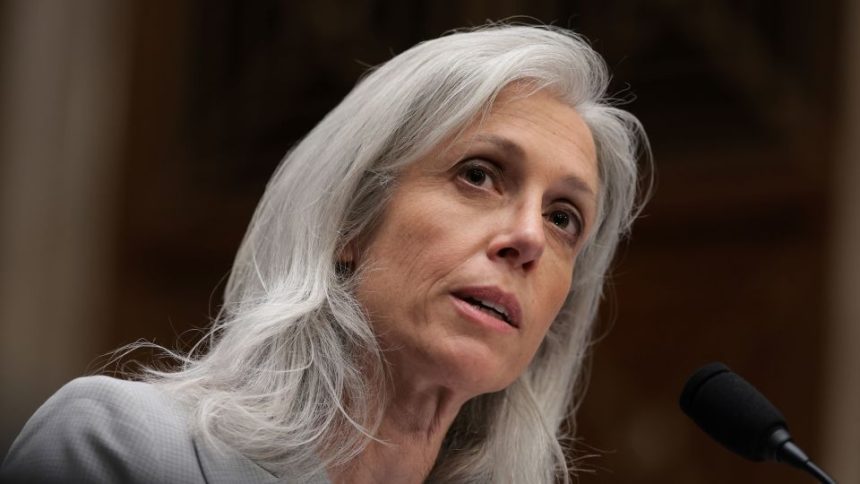A top Florida official says the controversial state-run immigration detention facility in the Everglades will likely be empty in a matter of days, even as Republican Gov. Ron DeSantis’ administration and the federal government fight a judge’s order to shutter the facility dubbed “Alligator Alcatraz” by late October. That’s according to an email exchange shared with The Associated Press.
In a message sent to South Florida Rabbi Mario Rojzman on Aug. 22 related to providing chaplaincy services at the facility, Florida Division of Emergency Management Executive Director Kevin Guthrie said “we are probably going to be down to 0 individuals within a few days,” implying there would soon be no need for the services.
Rojzman, and an executive assistant for the rabbi who sent an original email to Guthrie, confirmed to the AP on Wednesday Guthrie’s emailed response to both of them and the veracity of the messages.
A spokesperson for Guthrie, whose agency has overseen the construction and operation of the site, did not immediately respond to a request for comment.
DeSantis suggests deportations are behind declining population
Questioned about the email exchange by a reporter at an event in Orlando, DeSantis framed the declining population as the result of an uptick in deportations by the Department of Homeland Security.
“Ultimately it’s DHS’s decision where they want to process and stage detainees and it’s their decision about when they want to bring them out,” DeSantis said. He acknowledged the ongoing litigation may be “an influence” on the pace of deportations.
While DeSantis sought to minimize the state’s role in removals, attorneys for the federal government have said in legal filings that “any decision” to detain unauthorized immigrants at the center “would be Florida’s decision, not DHS’s,” adding that the facility operates using “state funds on state lands under state emergency authority.”
Workers install a permanent “Alligator Alcatraz” sign on July 3, 2025, in Collier County, Florida. – Al Diaz/Miami Herald/Tribune News Service/Getty Images
Peak detainee population neared 1,000
The facility was rapidly constructed two months ago with the goal of holding up to 3,000 detainees as part of President Donald Trump’s push to deport people who are in the U.S. illegally. At one point, it held almost 1,000 detainees, but U.S. Rep. Maxwell Frost, D-Fla., said that he was told during a tour last week that only 300 to 350 detainees remained. Three lawsuits challenging practices at the detention center have been filed, including one that estimated at least 100 detainees who had been at the facility have been deported. Others have been transferred to other immigration detention centers.
News that the last detainee at “Alligator Alcatraz” could leave the facility within days came less than a week after a federal judge in Miami ordered the detention center to wind down operations, with the last detainee needing to be out within 60 days. The state of Florida appealed the decision, and the federal government asked U.S. District Judge Kathleen Williams to put her order on hold pending the appeal, saying that the Everglades facility’s thousands of beds were badly needed since other detention facilities in Florida were overcrowded.
Environmental groups and the Miccosukee Tribe, whose lawsuit led to the judge’s ruling, opposed the request. They disputed that the Everglades facility was needed, especially as Florida plans to open a second immigration detention facility in north Florida that DeSantis has dubbed “Deportation Depot.”
Williams on Wednesday evening denied a motion to stay her preliminary injunction.
Lawsuits claim ‘severe problems’ at facility
The judge said in her order that she expected the population of the facility to decline within 60 days by transferring detainees to other facilities, and once that happened, fencing, lighting and generators should be removed.
Environmental groups and the Miccosukee Tribe had argued in their lawsuit that further construction and operations should be stopped until federal and state officials complied with federal environmental laws. Their lawsuit claimed the facility threatened environmentally sensitive wetlands that are home to protected plants and animals and would undermine billions of dollars spent over decades on environmental restoration.

Betty Osceola, a member of the Miccosukee Tribe of Indians of Florida, walks in the Everglades a few yards from the front entrance to “Alligator Alcatraz” at the Dade-Collier Training and Transition Airport on July 10, 2025 in Ochopee, Florida. – Joe Raedle/Getty Images

Aerial view of structures at the recently opened migrant detention center, “Alligator Alcatraz,” located at the site of the Dade-Collier Training and Transition Airport in Ochopee, Florida on July 4, 2025. (Pedro Portal/Miami Herald/Tribune News Service via Getty Images) – Pedro Portal/Miami Herald/Tribune News Service/Getty Images
By late July, state officials had already signed more than $245 million in contracts for building and operating the facility at a lightly used, single-runway training airport in the middle of the rugged and remote Everglades. The center officially opened July 1.
In their lawsuits, civil rights attorneys described “severe problems” at the facility which were “previously unheard-of in the immigration system.” Detainees were being held for weeks without any charges, they had disappeared from ICE’s online detainee locator and no one at the facility was making initial custody or bond determinations, they said.
Detainees also had described worms turning up in the food, toilets that didn’t flush, flooding floors with fecal waste, and mosquitoes and other insects everywhere.
For more CNN news and newsletters create an account at CNN.com













